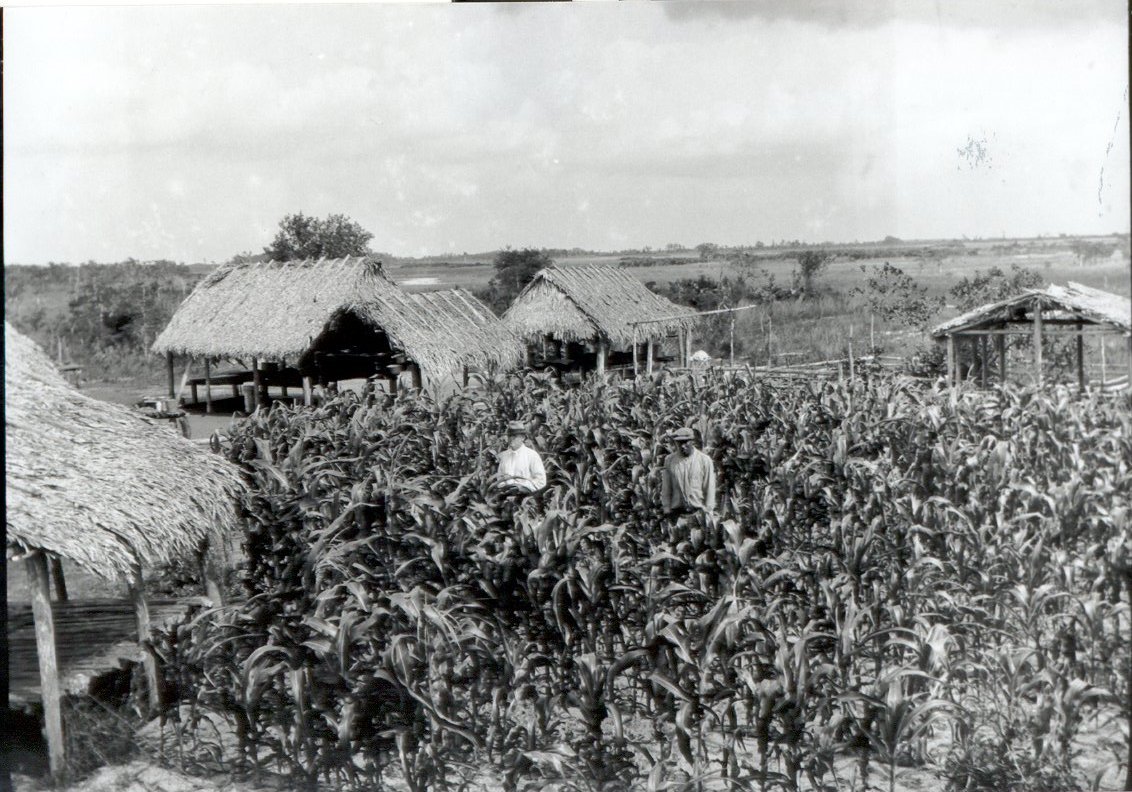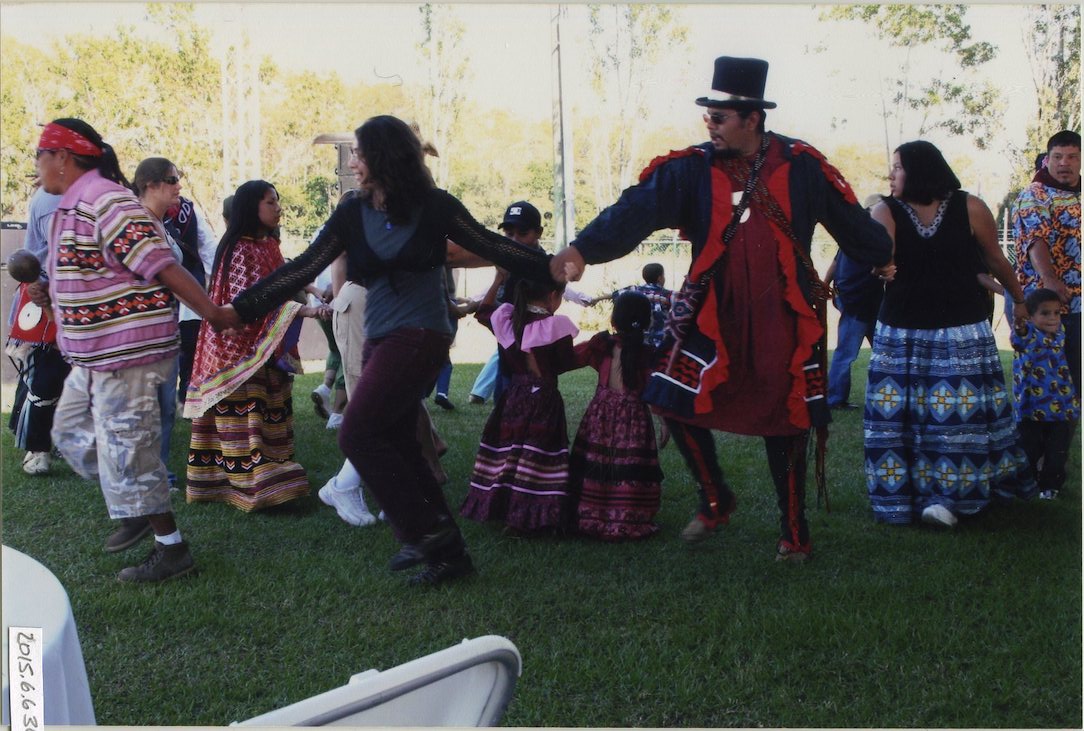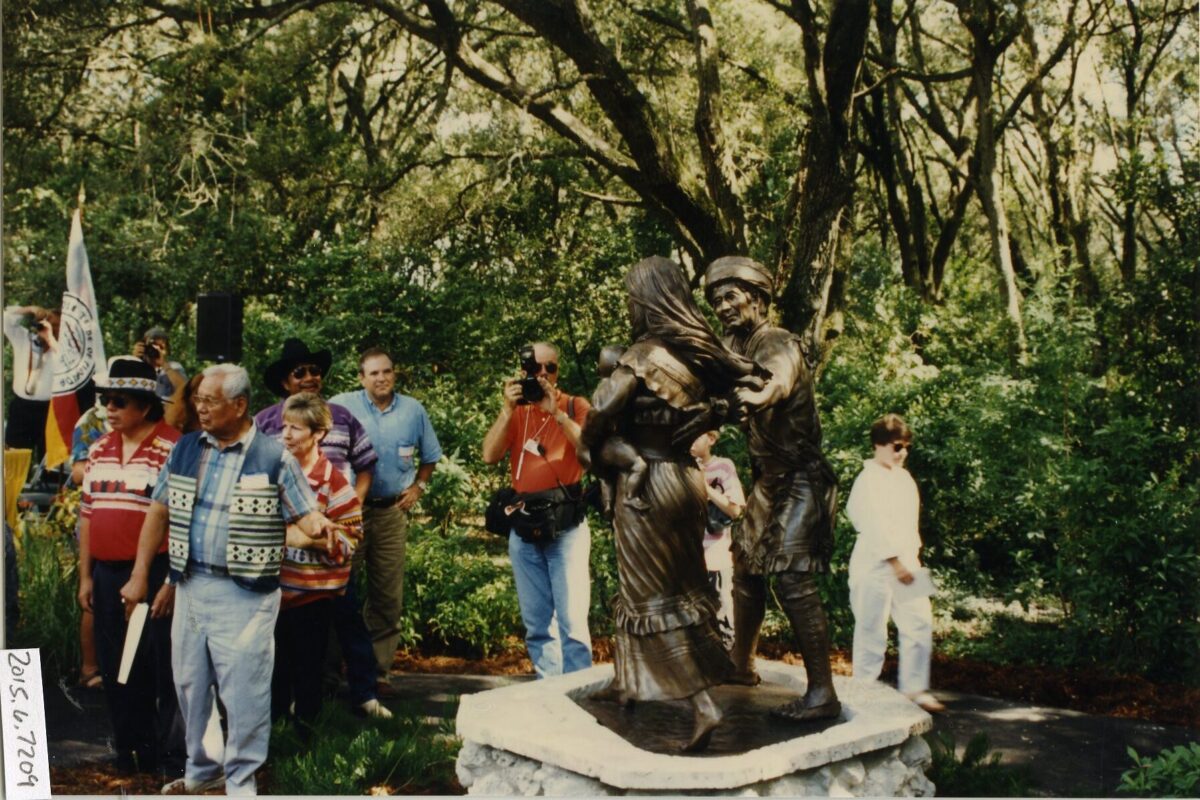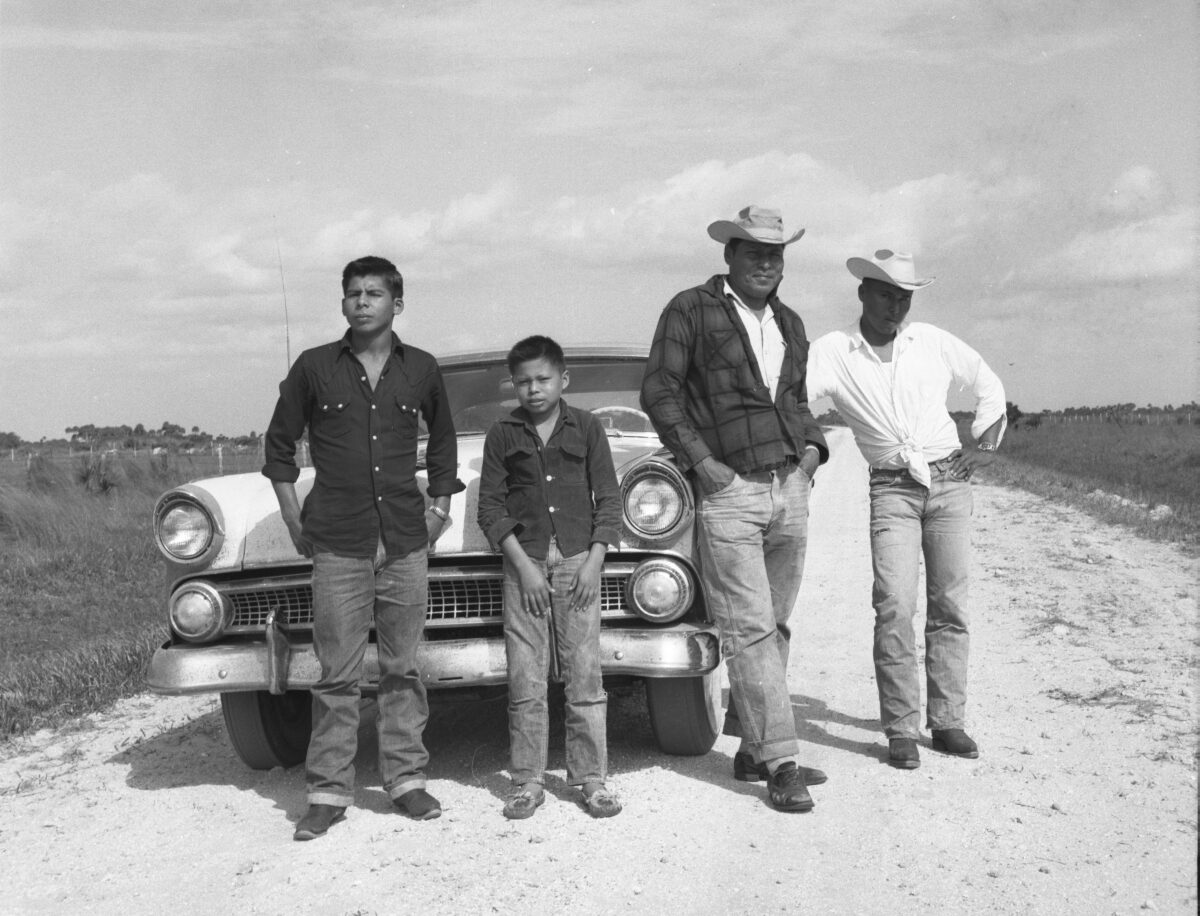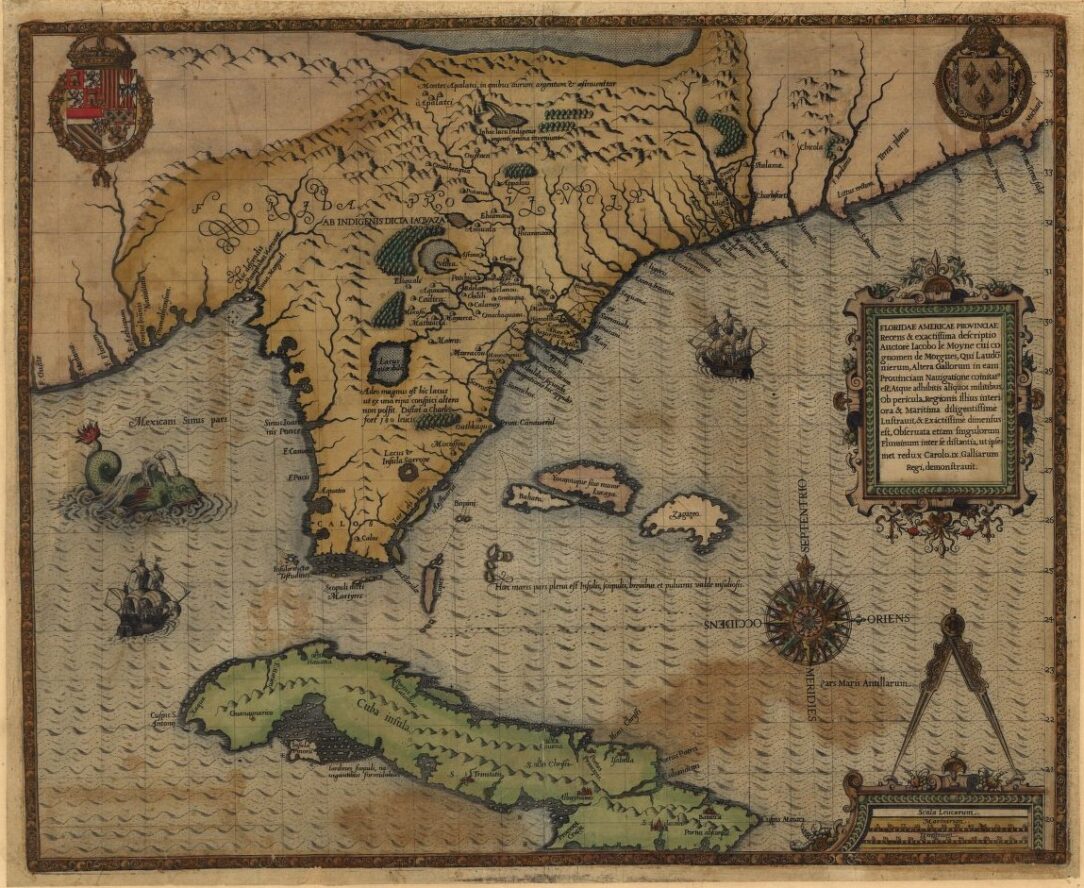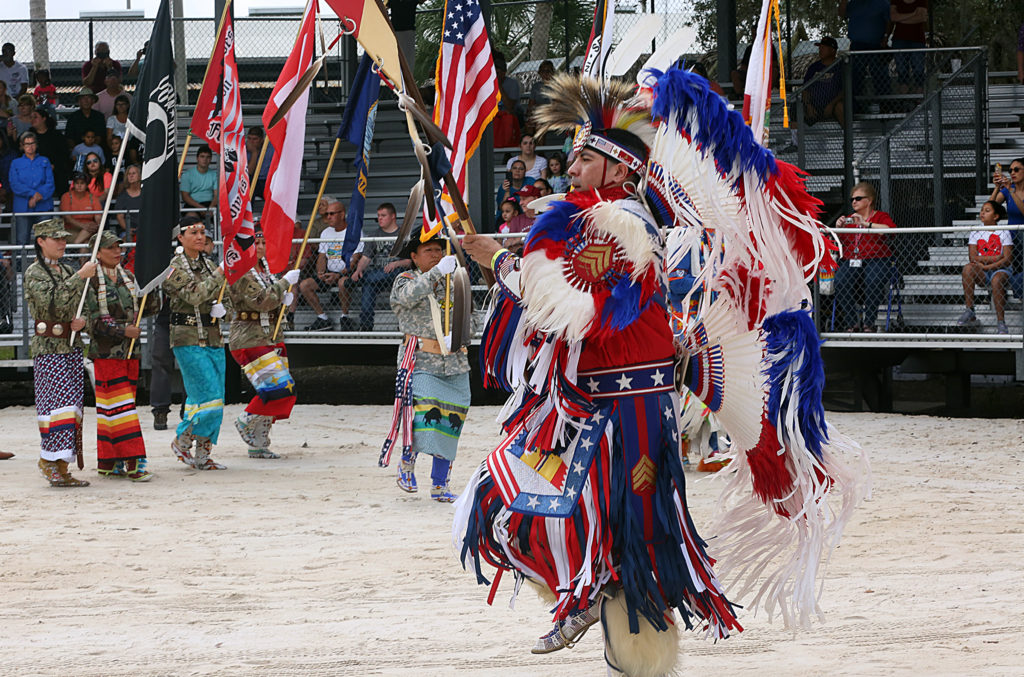Oh my Gourd! Seminole Pumpkins and Other Uniquely Cultivated Seminole Foods
Last month, we shared some sweet and savory Seminole treats and recipes that you can try at home. As we touched on previously, Indigenous cooking and harvesting represent acts of resistance to the pressures of colonization. Therefore, it is increasingly important to recognize, uphold, share, and support Indigenous cooking methods, patterns of subsistence, and what they represent. This week, we will look at several uniquely Seminole cultivated foods, and how they became important staples in the Seminole diet. We will look at Seminole pumpkins, coontie, and cabbage palm, as well as how Seminole gardens were uniquely designed to thrive in the Florida ecosystem and hide their important food resources. In our featured image this week you can see corn planted in a Seminole camp, probably early to mid 20th century. You can see chickees around it in the background (2007.46.27, ATTK Museum). Below, you can see a Seminole pumpkin. Seminole Foods Although Florida
American Indigenous Arts Celebration November 3rd-4th, 2023
It is that time of year again! This year’s American Indigenous Arts Celebration (AIAC) will be held November 3rd and 4th on the Big Cypress Seminole Indian Reservation.
Sweet and Savory Seminole Treats!
Get a closer look at traditional Seminole treats, recipes you can try at home, and how and where you can taste some of these special foods.
Mystery at Fort Marion
This week, join us to explore the Mystery of Coacoochee's Escape from Fort Marion.
THPO Spotlight: Artifact of the Month
This week, join us as we talk with Samantha Wade, Senior Bioarchaeologist and Lab Supervisor for the Seminole Tribe of Florida Tribal Historic Preservation Office (STOF THPO) about the long-running Artifact of the Month program.
The Devil, Abiaka: The Legacy of Sam Jones
This week, join us to learn about the life and legend of Abiaka. Also known as Abiaki, Arapeika/Aripika, Sam Jones, or just “The Devil,” Abiaka was a fierce Seminole wartime leader, medicine man, and spy.
Seminole Snapshots: The Peithmann Collection
This week, join us to look deeper at the impact of the Peithmann Collection, a collection of over a thousand photographs taken from the 1950s through the 1970s by Irvin M. Peithmann.
Seminole Spaces: Florida and Seminole Ancestors
Welcome back to our Seminole Spaces Series! This Friday, join us to learn about the Florida’s First People, and how ALL of Florida is Seminole.
What We Have Endured by John and Mary Lou Missal and Willie Johns
Welcome back to our Summer Book Series! This week, we are looking What We Have Endured: A Novel of the Seminole Wars by John & Mary Lou Missal and the late Willie Johns.
What’s Next? Covid-19, the 2020s and Beyond
Welcome back to the final installment of our Decades of Seminole Tourism series! Over the last year we have traced the triumphs and struggles of Seminole tourism throughout the decades, from the first forays into tourist camps to the monumental success of the casino industry. Last month, we looked at the changes to Seminole tourism in the 2010s. In particular, we celebrated and explored the impact of the Seminole Princesses. For the first time ever, a Seminole Tribe of Florida Tribal Member, was crowned Miss Indian World in 2019. This week, we will be looking at the extreme challenges that have faced Seminole tourism so far in the 2020s with the Covid-19 pandemic. Additionally, we will take a hopeful look at what’s next. In our featured image this week, you can see the first Grand Entry of the Brighton Field Day Festival & Rodeo on February 14, 2020 (photo by Beverly


